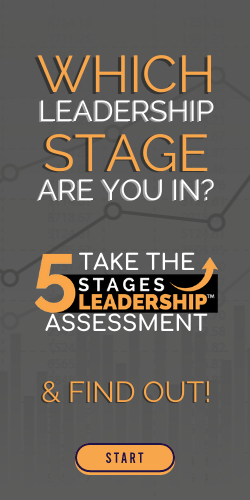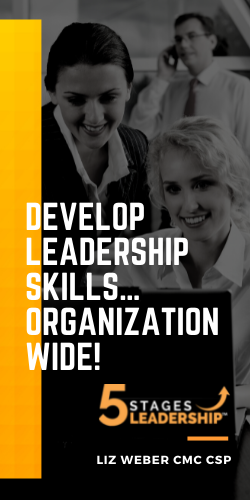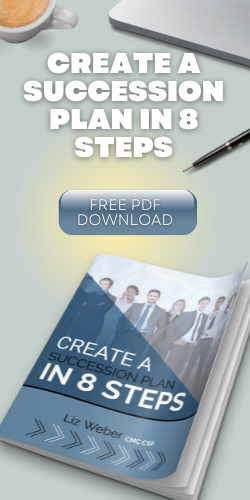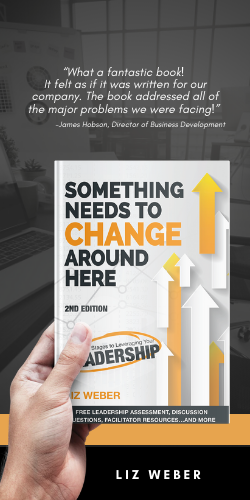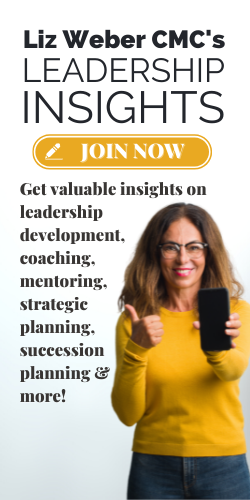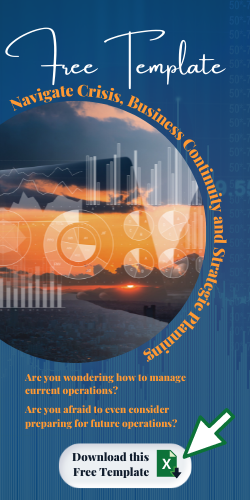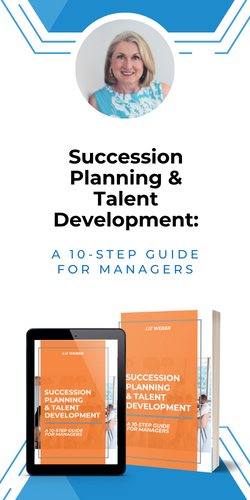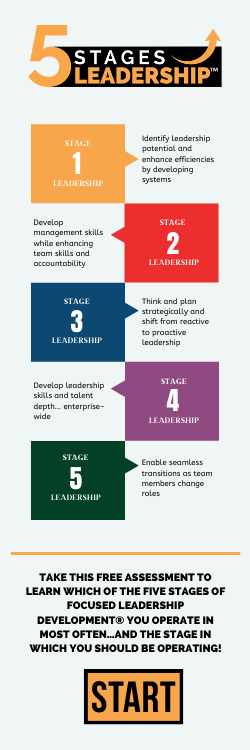 The Vice President of Human Resources called. “I need to create a Strategic Workforce Plan for our company, get our leadership team on-board, teach all managers how to do this, and then implement this thing. How do I create this so it makes sense and doesn’t alienate everyone in the process?” That’s a great question, because the key issue is not “How do I do this?” The key issue is, “How do I get the leadership team on-board with me to design, implement, and use this plan to ensure we have a talented and flexible workforce now and in the future?”
The Vice President of Human Resources called. “I need to create a Strategic Workforce Plan for our company, get our leadership team on-board, teach all managers how to do this, and then implement this thing. How do I create this so it makes sense and doesn’t alienate everyone in the process?” That’s a great question, because the key issue is not “How do I do this?” The key issue is, “How do I get the leadership team on-board with me to design, implement, and use this plan to ensure we have a talented and flexible workforce now and in the future?”
How do I get the leadership team on-board to help create a Strategic Workforce Plan to build depth and develop talent?
The tricky thing about Strategic Workforce Plans (SWPs) is that they are more sensitive than your organization’s strategic plan. Yes, you read that right: Strategic Workforce Plans are more sensitive than your organization’s strategic plan and therefore, they need to be developed and managed very carefully. Strategic Workforce Plans are dealing with your employees’ jobs, roles and responsibilities and therefore, they’re dealing with your employees’ paychecks, egos, and professional futures. These plans impact every single employee. They can impact each employee’s performance, morale, pay, position, work responsibilities now and in the future, performance standards, and talent development needs. Because of this, the Strategic Workforce Plan should be of critical concern to every single leader within your organization. If this isn’t done right, they’ll be dealing with disgruntled employees. If this is done right, they’ll have employees who are more focused, skilled, and engaged. To accomplish that outcome, the Strategic Workforce Planning process needs the input and support of your entire leadership team. Their support needs to be intentional and respectful, transparent when it can be, confidential when it needs to be, and aligned and objective throughout. Strategic Workforce Plans cannot be and should not be created by the Human Resources (HR) team alone. It’s not an HR plan. It’s the leadership team’s plan, with HR being the Project Manager.
Strategic Workforce Planning needs to be intentional and respectful, transparent when it can be, confidential when it needs to be, and aligned and objective throughout.
So how do we do this while keeping the process as simple as possible? Here are 15 steps to guide the way.
-
Start with your strategic plan.
As I shared in my article Create a Leadership Development Program That Actually Will Build Leadership Depth, start with why you need to create this plan in the first place. Your organization’s strategic plan should clearly articulate the type of organization you are planning to become 3, 5 or 10 years from now. Because of that, your Strategic Workforce Plan needs to help your leadership team identify: How do we need to (re)organize ourselves and what talent and positions will we need to best support, manage, and lead this organization 3, 5 or 10 years from now?
-
Create an Initial Strategic Workforce Plan Project and Communication Plan.
Because of the sensitivity of the issues discussed as this plan is created (i.e., potential new products, services or departments; closing-down products, service lines, departments or facilities; reassigning, promoting, demoting, or terminating employees), HOW your planning process and plan are communicated is as important as the plan itself. Therefore it’s critical that before you start to discuss or brainstorm ideas for this plan with anyone, work with a consultant or select group to craft an initial project and communication plan. This initial project and communications plan will be communicated to the Executive Team first, then rolled out through your leadership team, and, when you’re several months to one year away from impacting employees, you’ll roll out the appropriate aspects of the plan to the employees as well. To avoid the spread of unnecessary panic and misinformation while the plans are being created, have suggested scripting available for your managers. For instance, when asked by team members and others if their jobs or department is going to be impacted, your managers could say “Everything is on the table right now. We’re working to try to identify the most efficient and effective way to move forward so we can meet the Vision. I can’t share any specifics because nothing has been decided yet. When decisions are made and the time is right, I’ll tell you everything I can.”
-
Start with the Executive Team.
Again, because of the sensitivity of the issues discussed during this process, it won’t take long before people become territorial and protective. It doesn’t matter if you’re discussing these issues with seasoned professionals or new executives, when you start to brainstorm potential changes in someone’s professional world, tensions rise. Therefore, keep your initial conversations limited to the Executive Team. The Executive Team’s role is to brainstorm and develop contingency talking points, and preliminary ideas to address the anticipated pushback and concerns of members of the leadership team as your plans are rolled out through your leadership ranks.
-
Determine the Organizational Structure Changes Needed.
The first objective move with the plan is to clarify how the organization will change its structure as it moves through the next 3, 5 or 10 years. These organizational changes will identify the new product and service lines you anticipate starting or those you plan to shut down. The changes may involve new facilities and regions being opened or shutting down. The organizational design changes may also include restructuring of process and production flows and reporting hierarchies. This step alone is challenging because you’ll no doubt see members of your initial planning team becoming territorial as they start to sense their department, team or role may be impacted. Work through pushback and resistance with the Executive Team, as you objectively reiterate the strategic objectives and Vision of your strategic plan. There’s a reason for these proposed changes and they’re not personal. The changes are being driven by the strategic plan for the customers’, employees’, and the organization’s future.
-
Bring Other Leaders Into the Process.
Once the initial strategies and framework have been outlined and the anticipated areas of pushback have been identified, it’s time to bring other leaders into the process. By bringing the next tier of leadership into the process, you’re being intentional and respectful of their concerns and ideas, and the direct impact this project will have on them and their teams. If they and their teams are to be impacted, they need to be part of the process. Clarify that they were intentionally not included right away, to enable you to create enough of a framework to get things started. However, to now create the full plan, their support and input is critical. To minimize resistance with this next tier, share what occurred and what the outcomes of Steps 1 – 4 were that brought you to where you are today. Help them understand the changes are not personal. The proposed changes are objective and intended to most effectively move the organization forward.
-
Identify Talent Needs & Staffing Structure.
Now that you’ve drafted a new organizational structure and refined operating/production flows, draft a new organizational chart. Allow the leaders entering the process to pushback, challenge, alter, and fine-tune the new draft organizational plan (Again, keeping all draft plans confidential). In this step, remind your managers not to focus on the individuals currently holding each position. Instead, focus on identifying the most effective and efficient staffing structure to support your new organizational structure. Where do you need to move team members? Where do you need to streamline team size? Where should you enhance team responsibilities? Talk through and debate the organizational structure and proper staffing needed to support, manage, and lead your organization of the future.
-
Identify the Knowledge, Skills & Abilities Needed.
Once your team has honed-in on the refined organizational chart and staffing structure, it’s time to review, position-by-position, what knowledge, skills, and abilities (KSAs) each position-holder should be able to competently do given the job he or she is filling. [This information is what will drive your refined position responsibilities and performance expectations, the Individual Development Plans (IDPs) for all employees, hiring and recruiting plans, and your training plans (technical and soft skills).] Again, challenge your leaders to not focus on who is currently in various positions. Instead, guide them to focus on what KSAs the position requires. If your managers focus on the current position holders, they will often unintentionally limit the real KSAs needed if a current position holder doesn’t have them or won’t be able to realistically gain them. Also, if your managers focus on the current position holders, they may also hold back in identifying what position skills will really be needed moving forward. Your managers will limit the growth and professional development needed of every team member. A critical element of Strategic Workforce Planning is that it helps identify what professional development and additional KSAs are needed of every single employee from the front-line to the CEO. All employees should be challenged and expected to develop KSAs to fulfill their roles as their responsibilities evolve and your organization moves towards its vision.
-
Refine Position Responsibilities and Performance Expectations.
Work with the leaders in refining every position’s responsibilities. Create new or refined position responsibility guides to outline performance expectations, the clarified role and the responsibilities to be fulfilled by a fully competent position holder. If done well, every person will be challenged to grow, refine, and more competently fulfill his or her role while clearly seeing why the refinements to the position’s KSAs are objective and beneficial.
-
Refine Your Performance Management Process.
This is a great time to discuss with the leadership team refinements to your performance management process. How are you going to ensure your employees know consistently how they’re doing, where they need to adjust behaviors, and how they’re contributing to moving things forward? Are you going to stay with your traditional review process, eliminate it all together, or move to a more informal quarterly or other feedback format? What will be most effective for the employees and helpful to the managers?
-
Develop a Staff Transition Plan.
Through the SWP process, it is often apparent select staff will no longer be needed or will not be a good long-term fit given the refined structure and new performance expectations. With solid input from your leadership team, develop a clear, objective transition plan to help HR and all managers move through the difficult process of transitioning employees out of the organization.
-
Develop Individual Development Plans (IDPs).
IDPs cannot be created by HR with employees. HR can create the process and support the managers and employees through this process, but the managers are the key to identifying, explaining, and clarifying what KSAs will end up on each team member’s IDP. The managers need to be able to coach each team member on how to best develop the necessary KSAs to competently fulfill his/her job responsibilities now and moving forward.
-
Develop a Recruitment & Hiring Plan.
Now that you’ve got your revised organizational chart and revised position responsibilities, you’re able to coordinate with HR recruiters and the respective leaders to strategically recruit, hire, and onboard new team members.
-
Develop the Training & Development Plans.
The work you will have done to identify the workforce’s current and needed KSA’s will pinpoint what the most critical training topics are and which team members need support sooner rather than later. Coordinate with the leaders to identify the mix of on-boarding, on-the-job and classroom training, coaching, cross-training, and virtual training that is the most efficient and effective in getting their employees to full competency. What will help keep them current, skilled, and in-tune with the changing needs of the organization and their roles? Identify why, how, and which team members will participate and to what level to continually enhance their KSAs, keep them marketable, and keep them engaged.
-
Keep Every Plan Flexible and Fluid.
The beauty of smart strategic planning is that, when done well, the plans are flexible and fluid. The plan creates clarity, not rigidity. The same needs to hold true with Strategic Workforce Plans. Use cloud-based strategic planning or workforce planning tools, project planning software, or spreadsheets at a bare minimum, that enable relatively easy adjustments when the strategic plan changes, timelines shift, or strategies are altered. As the strategic plan shifts, so does your strategic workforce plan. If your plans are a burden to update, you need a different tool.
-
Communicate and Update the Strategic Workforce Plan Regularly.
The key to keeping the leadership team engaged in the strategic workforce planning process is to keep them informed. Let them know when to anticipate staffing, training or other impacts on their teams, and let them know how those workforce challenges are proactively being addressed. To communicate workforce issues strategically, communicate proactively.
If you’re challenged with creating a Strategic Workforce Plan, be intentional in how you engage and include the leadership team in the process.
Remember, you need them to help design, implement, and use this plan to ensure you have a talented and flexible workforce now and in the future. Without the leadership team’s help, all you’ve got is an interesting plan.
Copyright MMXVIII – Liz Weber, CMC, CSP – Weber Business Services, LLC – www.WBSLLC.com +1.717.597.8890
Liz and her team work with leaders to create focused plans for their organizations’ future. Then they work with the leaders to ensure their plans are implemented effectively.






